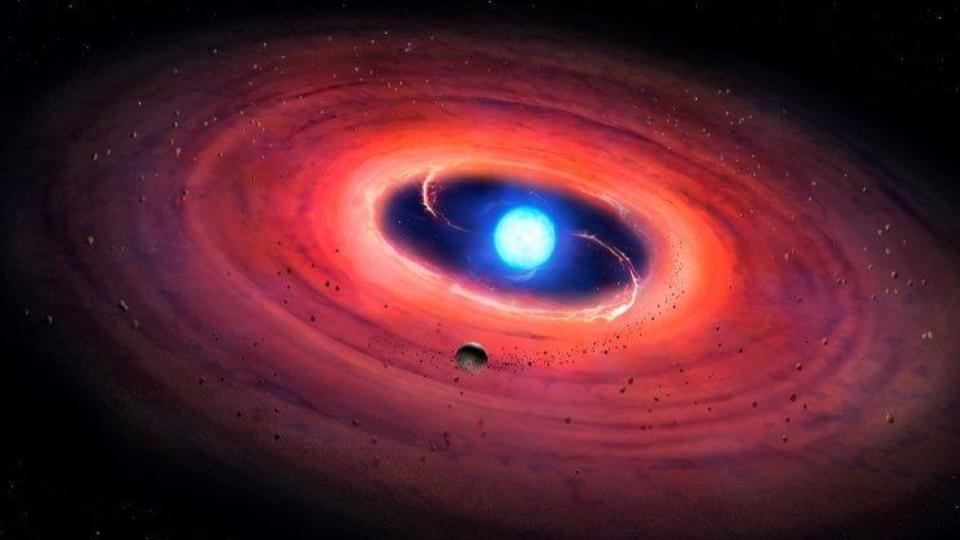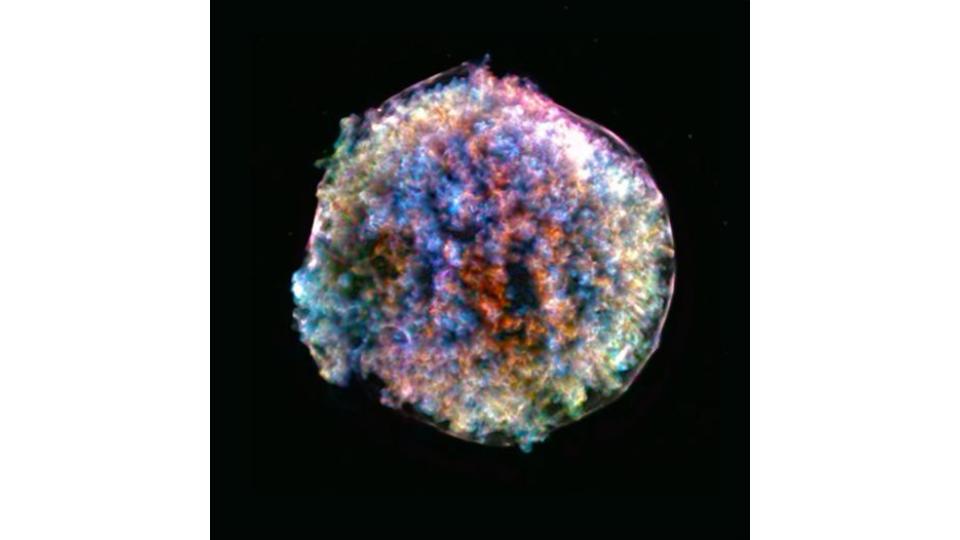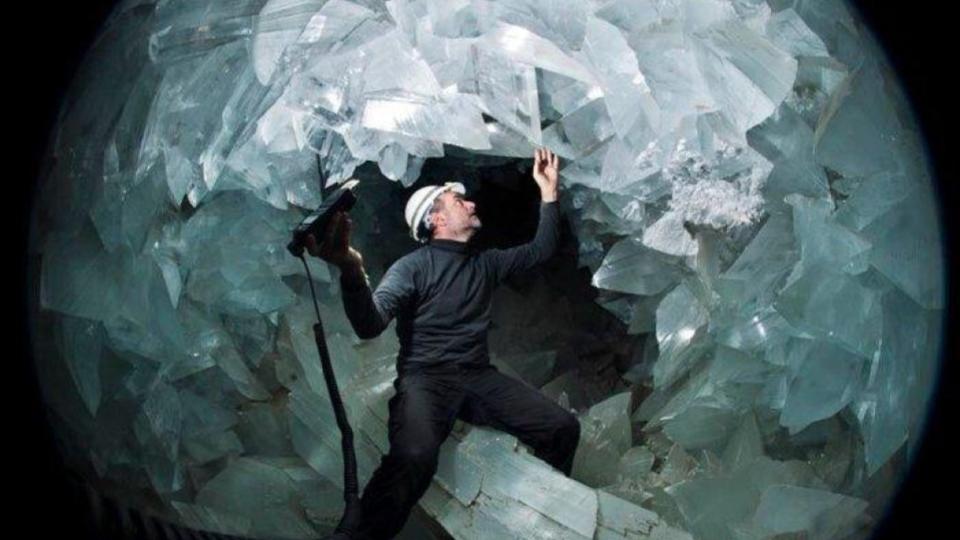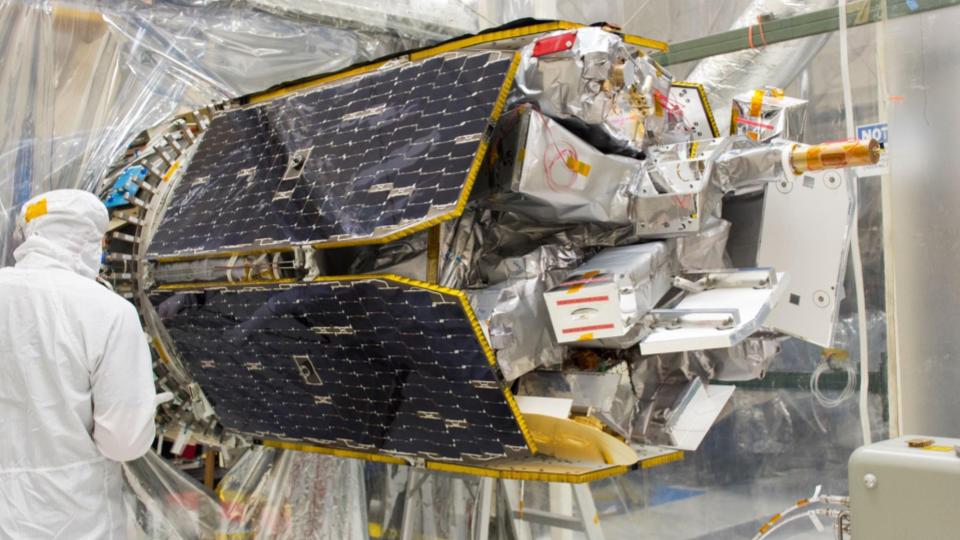In today’s episode, we look at disrupted worlds showing off their inner chemistry, the lumpily-expanding Tycho supernova remnant, and a sharply bumpy geode in Spain big enough to sit in with a friend. We also have updates the Insight missions’s now-digging mole, and the ICON mission’s launch.
Transcript
Over the years I’ve read a lot of journal articles and press releases about new discoveries. In general they seem to fall into 3 categories: Discoveries that come out of slow and steady and careful work that builds on years and sometimes generations of effort, discoveries that are that magical combination of looking at the right place at the right time and being smart and creative enough to understand what they’re seeing, and discoveries that require sometimes require people to think of something that in retrospect makes perfect sense, but someone no one had previously thought to do.
Today’s first story is one of those, “Why didn’t we think of this before?” kinds of discoveries. In a new paper published in the journal Science, researchers led by Alexandra Doyle have announced that they observed that extrasolar planets have geochemistry similar to that of Earth.
Yes folks, I said observed.

- Astronomers Find Remarkable Evidence The Guts of Some Exoplanets Are Similar to Earth’s (press release)
While we don’t have the ability to even take core samples of Mars, the violence of our universe makes it possible for us to essentially take core samples of distant worlds by looking for examples of planets being disrupted as they fall into their now dead stars. Doyle’s team looked at 6 white dwarf stars and observed heavier elements that could only come from disrupted planets. White dwarfs, on their own, don’t have heavy elements visible in their stellar spectrum. In the case of these 6 stars, they observed not only elements like silicon and magnesium, but they also saw iron oxide, an element that indicated that the disrupted worlds could have undergone the same kinds of rust-making processes that we see on Earth and Mars.
According to Young, “We are doing real geochemistry on rocks from outside our solar system. Most astrophysicists wouldn’t think to do this, and most geochemists wouldn’t think to ever apply this to a white dwarf.”
This also means that someday, billions of years from now, folks may be able to measure the composition of our world as we get disrupted by the white dwarf our Sun can become.

- The Clumpy and Lumpy Death of a Star (press release)
The death of stars is simply part of the evolution of our Universe, with worlds like our own resulting from generations of stars being born, dying, and giving off their newly created heavy elements to surrounding space. While small stars like our Sun will gently puff off their atmospheres while their cores become white dwarfs, large starts take more violent path; they blow up as supernovae. Over the course of human history, a small number of these stellar explosions have occurred nearby, allowing us to see a new star shining brightly in the sky for a short period of time. One of these observed events was the 1572 explosion of a massive star that exploded in the constellation Cassiopeia. Documented by Danish astronomer Tycho Brahe, that event is now known as the Tycho supernova.
When we look at the region of the sky where this event occurred, we don’t really see anything in the wavelengths our eyes can see, but if we switch to X-Rays, an amazingly complex pattern of high-energy emission is revealed. The Chandra X-Ray observatory has been revisiting this object over it’s many years of existence, and in the latest set of observations, astronomers are looking specifically at the motions of energetic silicon atoms, that can been moving toward and away from us in this expanding shell of material. These observations show a lumpy bumpy structure that doesn’t appear to have evolved from a smooth explosion. Rather, in comparing what is observed to a variety of computer models, it appears that the initial supernova may have ignited simultaneously in many different places. This is a new detail in our understanding of Type 1a supernova, and may help us further confirm or not confirm that Type 1a appear the same in all cases.

From lumpy sphere we now turn to another, but this time, it is a sphere found underground here on the planet Earth. In the Pulpi lead mine in Spain, a massive geode was found in 1999. Most of the time, these spherical, crystal filled rocks are fist sized, but sometimes they can grow truly passive, and how this happens has been a question for geologists the world over. In a new paper in the journal Geology, researchers indicate postulate that this one particular geode, measuring not quite 2m in diameter, is thought to be the result of ancient water passing through surrounding anhydrite and depositing this salt into the geode’s location, where small dissolved crystals reformed into ever larger and larger crystals in an environment that fluctuated around a temperature of about 20C or 68F. It’s unclear exactly when this happened. Geologists think this geode formed between 60,000 and 2 million years ago, which isn’t the most precise of estimates. Determining the when of this crystal will be left to future generations of geophysicists.
Before we round out this episode for the day, I want to give you two quick updates on news from earlier episodes.

- Mars InSight’s ‘Mole’ Is Moving Again (press release)
We had previously reported that in their latest attempt to get the Mars InSight’s temperature probe to dig itself into the Martian surface, mission operators would use the lander’s shovel to put sideways pressure on the probe as it tried to hammer itself down. It turns out, that was the required magic. In the past week, this instrument, called “the mole” was able to dig itself 2cm down, which is 2cm more than it had been able to go in many months. It is hoped that this probe will eventually make it 16 feet or 5 meters down, so here is to hoping this digging rate will steadily grow over time.

We also have a story behind the story for the ICON mission. This much-delayed satellite finally launched last week from a rocket dropped from an aircraft. Originally planned to launch in 2017, this mission has seen launch date after launch date come and then get cancelled. Well, it turned out that almost happened again last week, but this time the problem wasn’t the launch rocket – it was a problem with the power to ground control. The ICON mission is operated by the UC Berkeley Space Science Laboratory, and it’s location in California was on the list of places where PG&E power company had scheduled shutdowns to prevent wildfires. For fairly obvious reasons, NASA doesn’t allow satellites to get launched when their ground control stations don’t have power, and this led to some fast and fancy electrical work to be done. While UC Berkeley does have its own power plant, it wasn’t considered good enough to rely upon. So, the Space Science Laboratory got not just 1 generator, but 2, and they hooked everything up to make sure they would have uninterrupted electricity. ICON’s launch ended up being a complete success, and we have to commend the Berkeley team for their Macgyvering. This also points out that the combination of human expansion into remote areas and climate change is having unintended consequences of every kind. Here is to hoping that this year’s fire season ends soon and without the kinds of fires we have seen in past years.
And that rounds out our show for today.
Thank you all for listening. The Daily Space is produced by Susie Murph, and is a product of the Planetary Science Institute, a 501(c)3 non profit dedicated to exploring our Solar System and beyond. We are made possible through the generous contributions of people like you. If you would like to learn more, please check us out on patreon.com/cosmoquestx
Each live episode of the Daily Space is archived on YouTube. If you miss an episode here on Twitch.tv, you can find it later on youtube.com/c/cosmoquest. These episodes are edited and produced by Susie Murph.
We are here thanks to the generous contributions of people like you who allow us to pay our staff a living wage. Every bit, every sub, and every dollar committed on Patreon.com/cosmoquestx really helps. If you can’t give financially, we really do understand, and there are other ways you can help our programs. Right now, the best way you can help is to get the word out. Let your friends know, share our channel on your social media, or leave a recommendation. You never know what doors you are opening.
We really wouldn’t be here without you – thank you for all that you do.


 We record most shows live, on Twitch. Follow us today to get alerts when we go live.
We record most shows live, on Twitch. Follow us today to get alerts when we go live.